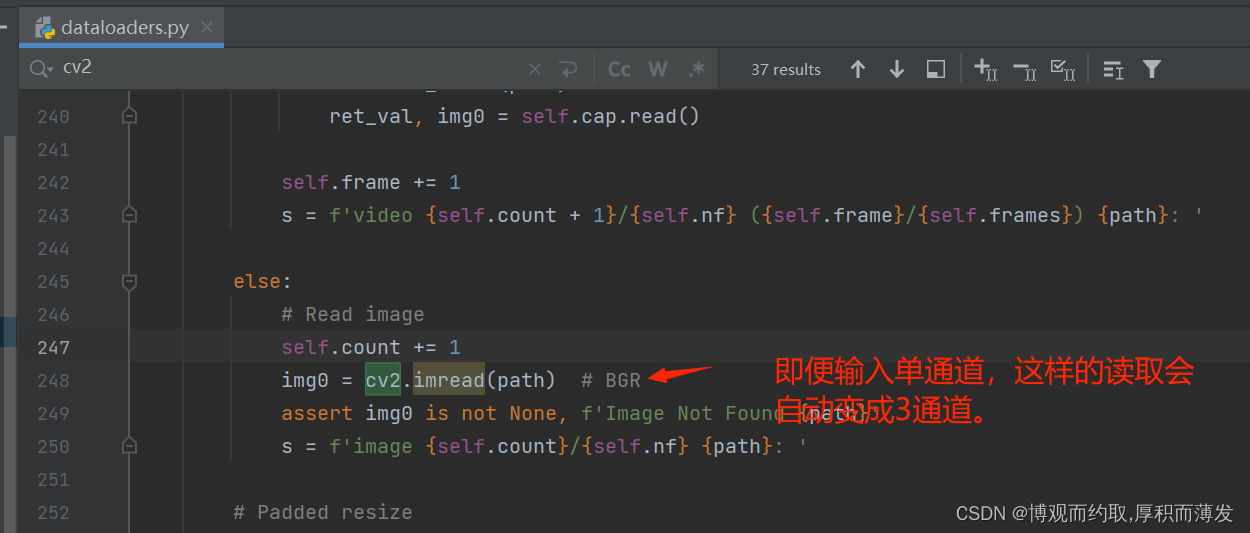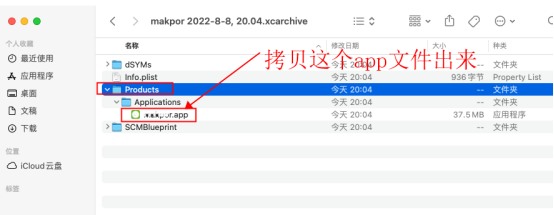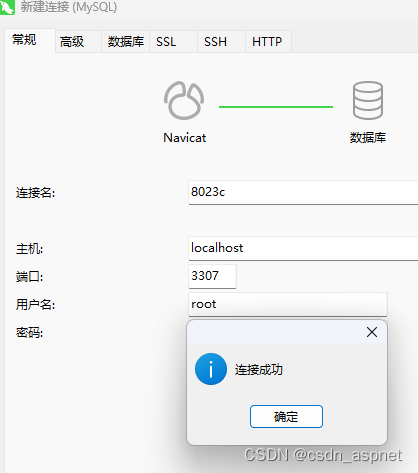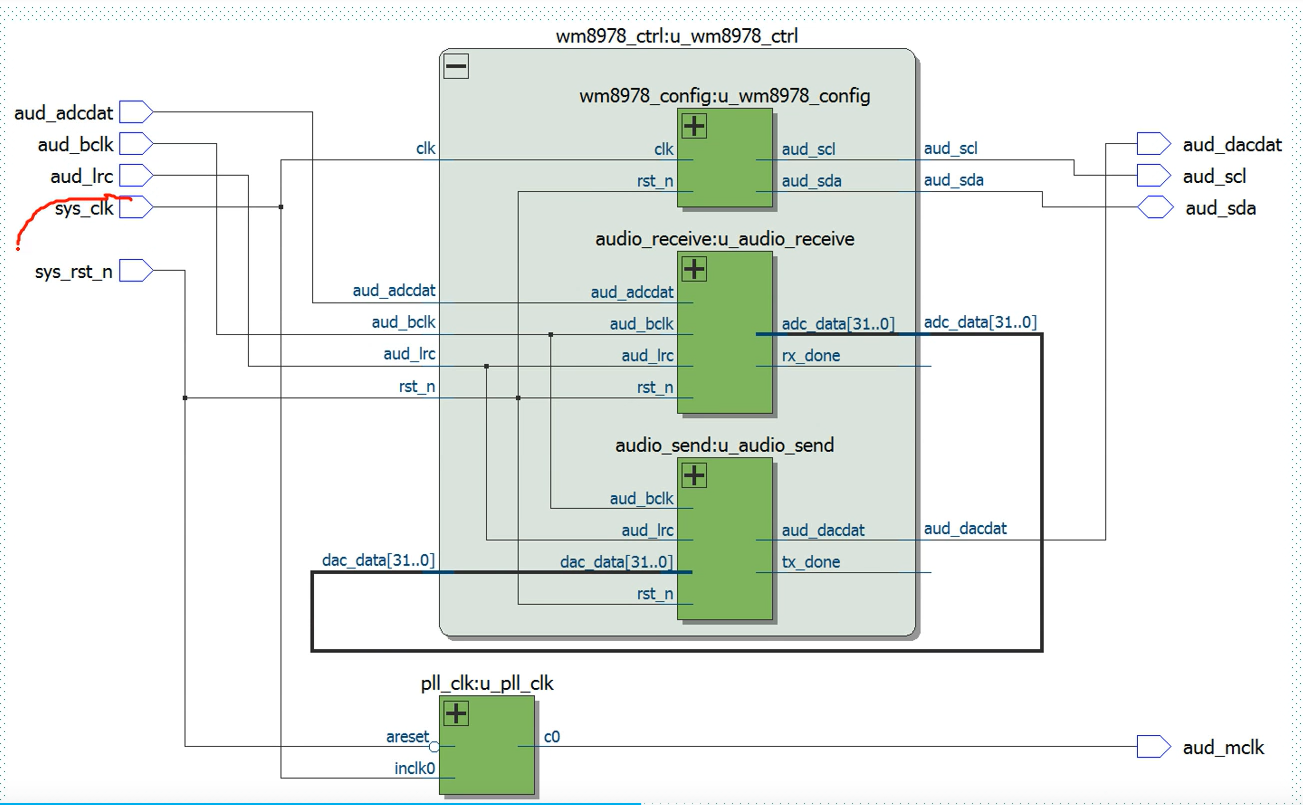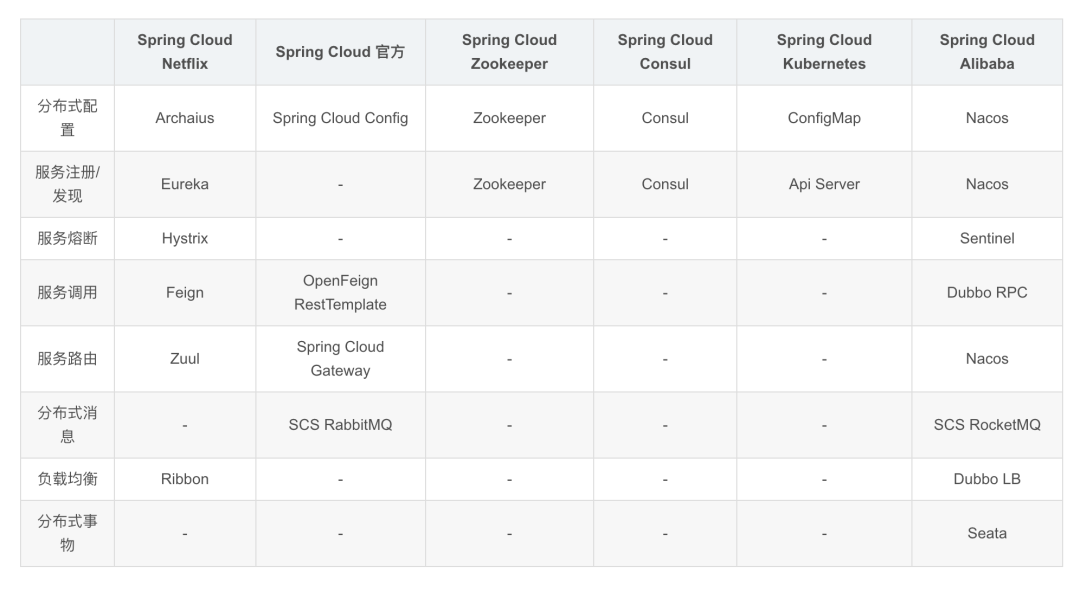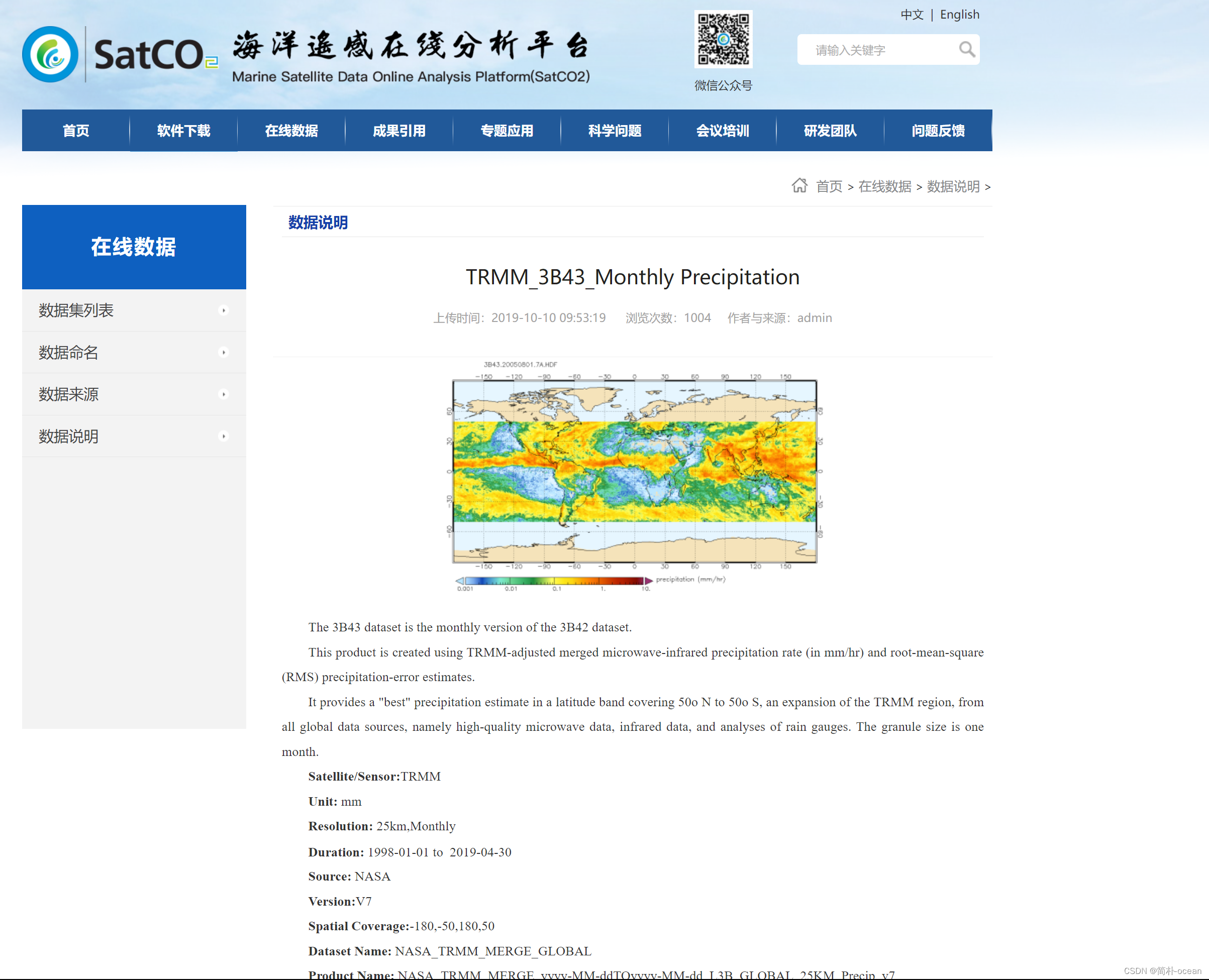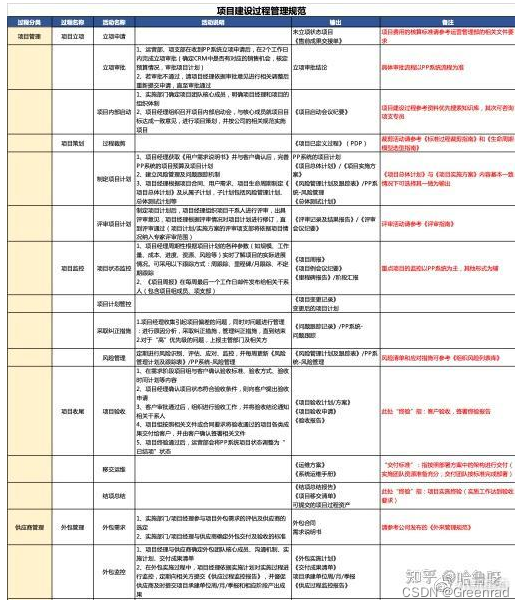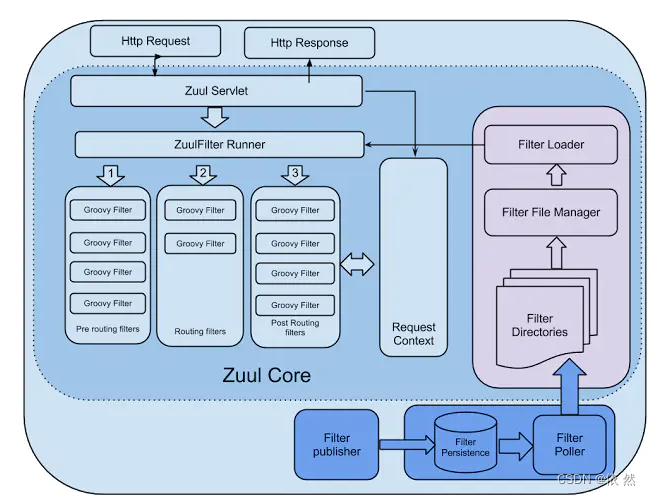
文章目录
- 十、MyBatis的缓存
- 10.1 MyBatis的一级缓存
- 场景1:判断同一个sqlSession是否查询1级缓存,答案:会查询1级缓存
- 场景2:判断不同sqlSession是否查询1级缓存,答案:不会查询1级缓存
- 场景3:判断相同sqlSession中间执行一次清除后,是否查询1级缓存,答案:不会查询1级缓存
- 10.2 MyBatis的二级缓存
- 场景1:验证二级缓存生效的问题,结论:没有SqlSession关闭或提交之后缓存开启不生效
- 10.3 二级缓存的相关配置
- 10.4 整合第三方缓存EHCache
- 本人其他相关文章链接
十、MyBatis的缓存
10.1 MyBatis的一级缓存
一级缓存是SqlSession级别的,通过同一个SqlSession查询的数据会被缓存,下次查询相同的数据,就会从缓存中直接获取,不会从数据库重新访问使一级缓存。
一级缓存失效的四种情况:
- 不同的SqlSession对应不同的一级缓存
- 同一个SqlSession但是查询条件不同
- 同一个SqlSession两次查询期间执行了任何一次增删改操作
- 同一个SqlSession两次查询期间手动清空了缓存
场景1:判断同一个sqlSession是否查询1级缓存,答案:会查询1级缓存
@Test
public void testCache1(){
SqlSession sqlSession = SqlSessionUtils.getSqlSession();
CacheMapper cacheMapper1 = sqlSession.getMapper(CacheMapper.class);
System.out.println(cacheMapper1.getAddressByUserId(1));
CacheMapper cacheMapper2 = sqlSession.getMapper(CacheMapper.class);
System.out.println(cacheMapper2.getAddressByUserId(1));
}
结果日志打印:

场景2:判断不同sqlSession是否查询1级缓存,答案:不会查询1级缓存
@Test
public void testCache2(){
SqlSession sqlSession1 = SqlSessionUtils.getSqlSession();
CacheMapper cacheMapper1 = sqlSession1.getMapper(CacheMapper.class);
System.out.println(cacheMapper1.getAddressByUserId(1));
SqlSession sqlSession2 = SqlSessionUtils.getSqlSession();
CacheMapper cacheMapper2 = sqlSession2.getMapper(CacheMapper.class);
System.out.println(cacheMapper2.getAddressByUserId(1));
}
结果日志打印:

场景3:判断相同sqlSession中间执行一次清除后,是否查询1级缓存,答案:不会查询1级缓存
@Test
public void testCache3(){
SqlSession sqlSession = SqlSessionUtils.getSqlSession();
CacheMapper cacheMapper = sqlSession.getMapper(CacheMapper.class);
System.out.println(cacheMapper.getAddressByUserId(1));
sqlSession.clearCache();
System.out.println(cacheMapper.getAddressByUserId(1));
}
结果日志打印:

10.2 MyBatis的二级缓存
二级缓存是SqlSessionFactory级别,通过同一个SqlSessionFactory创建的SqlSession查询的结果会被缓存;此后若再次执行相同的查询语句,结果就会从缓存中获取
二级缓存开启的条件:
- 在核心配置文件中,设置全局配置属性cacheEnabled=“true”,默认为true,不需要设置
- 在映射文件中设置标签<cache />
<mapper namespace="com.mybatis.mapper.CacheMapper">
<cache/>
</mapper>
- 二级缓存必须在SqlSession关闭或提交之后有效
- 查询的数据所转换的实体类类型必须实现序列化的接口
@Data
@AllArgsConstructor
@NoArgsConstructor
@ToString
public class Address implements Serializable {
//id
private Integer id;
//用户名称
private String name;
//用户ID
private Integer userId;
private List<User> userList = new ArrayList<>();
}
使二级缓存失效的情况:两次查询之间执行了任意的增删改,会使一级和二级缓存同时失效。
场景1:验证二级缓存生效的问题,结论:没有SqlSession关闭或提交之后缓存开启不生效
@Test
public void testCache4(){
try {
InputStream is = Resources.getResourceAsStream("mybatis-config.xml");
SqlSessionFactory sqlSessionFactory = new SqlSessionFactoryBuilder().build(is);
SqlSession sqlSession1 = sqlSessionFactory.openSession(true);
CacheMapper mapper1 = sqlSession1.getMapper(CacheMapper.class);
System.out.println(mapper1.getAddressByUserId(1));
SqlSession sqlSession2 = sqlSessionFactory.openSession(true);
CacheMapper mapper2 = sqlSession2.getMapper(CacheMapper.class);
System.out.println(mapper2.getAddressByUserId(1));
} catch (IOException e) {
e.printStackTrace();
}
}
结果日志打印:

执行sqlSession1.close();之后验证效果,如图
@Test
public void testCache4(){
try {
InputStream is = Resources.getResourceAsStream("mybatis-config.xml");
SqlSessionFactory sqlSessionFactory = new SqlSessionFactoryBuilder().build(is);
SqlSession sqlSession1 = sqlSessionFactory.openSession(true);
CacheMapper mapper1 = sqlSession1.getMapper(CacheMapper.class);
System.out.println(mapper1.getAddressByUserId(1));
sqlSession1.close();
SqlSession sqlSession2 = sqlSessionFactory.openSession(true);
CacheMapper mapper2 = sqlSession2.getMapper(CacheMapper.class);
System.out.println(mapper2.getAddressByUserId(1));
} catch (IOException e) {
e.printStackTrace();
}
}
结果日志打印:

10.3 二级缓存的相关配置
MyBatis缓存查询的顺序:
- 先查询二级缓存,因为二级缓存中可能会有其他程序已经查出来的数据,可以拿来直接使用。
- 如果二级缓存没有命中,再查询一级缓存
- 如果一级缓存也没有命中,则查询数据库
- SqlSession关闭之后,一级缓存中的数据会写入二级缓存
10.4 整合第三方缓存EHCache
问题:为啥需要使用第三方缓存插件,而不是完全直接使用Mybatis自带的缓存?
答案:Mybatis自带的缓存是持久层框架,会把缓存写入磁盘中,而读写磁盘肯定会涉及大量的IO操作,明显会导致效率低,如果能从内存中读取缓存内容那就会快很多,所以需要使用第三方缓存插件。
注意:第三方缓存插件代替的只是“二级缓存”而已,无法代替一级缓存。
1.添加依赖
<!-- Mybatis EHCache整合包 -->
<dependency>
<groupId>org.mybatis.caches</groupId>
<artifactId>mybatis-ehcache</artifactId>
<version>1.2.1</version>
</dependency>
<!-- slf4j日志门面的一个具体实现 -->
<dependency>
<groupId>ch.qos.logback</groupId>
<artifactId>logback-classic</artifactId>
<version>1.2.3</version>
</dependency>
2.各jar包功能

3.创建EHCache的配置文件ehcache.xml
<?xml version="1.0" encoding="utf-8" ?>
<ehcache xmlns:xsi="http://www.w3.org/2001/XMLSchema-instance"
xsi:noNamespaceSchemaLocation="../config/ehcache.xsd">
<!-- 磁盘保存路径 -->
<diskStore path="D:\atguigu\ehcache"/>
<defaultCache
maxElementsInMemory="1000"
maxElementsOnDisk="10000000"
eternal="false"
overflowToDisk="true"
timeToIdleSeconds="120"
timeToLiveSeconds="120"
diskExpiryThreadIntervalSeconds="120"
memoryStoreEvictionPolicy="LRU">
</defaultCache>
</ehcache>
4.设置二级缓存的类型
<cache type="org.mybatis.caches.ehcache.EhcacheCache"/>
5.EHCache配置文件说明
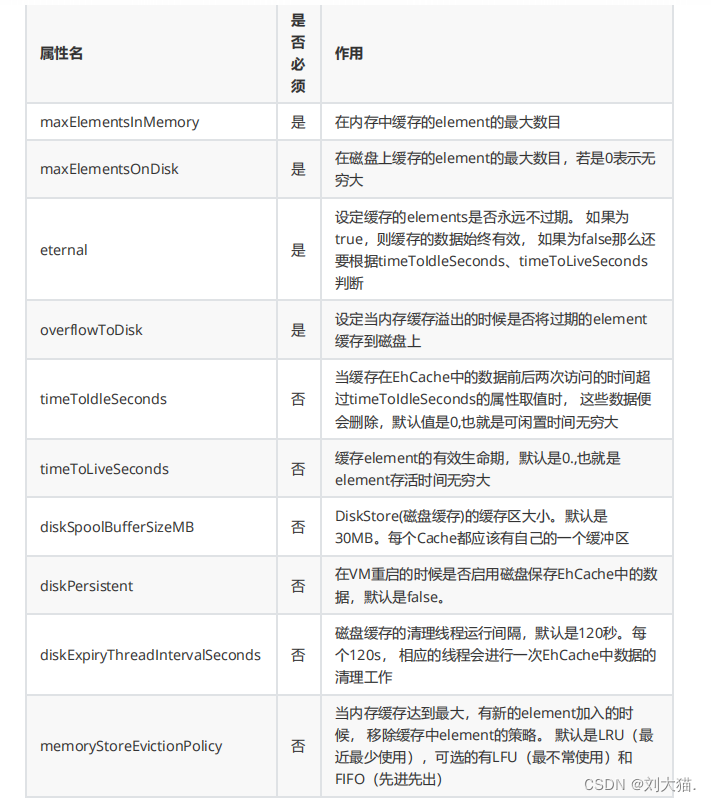
本人其他相关文章链接
1.一、MyBatis简介:MyBatis历史、MyBatis特性、和其它持久化层技术对比、Mybatis下载依赖包流程
2.二、搭建MyBatis采用xml方式,验证CRUD(增删改查操作)
3.三、MyBatis核心配置文件详解
4.四、MyBatis获取参数值的两种方式(重点)
5.五、MyBatis的增删改查模板(参数形式包括:String、对象、集合、数组、Map)
6.六、MyBatis特殊的SQL:模糊查询、动态设置表名、校验名称唯一性
7.七、MyBatis自定义映射resultMap
8.八、(了解即可)MyBatis懒加载(或者叫延迟加载)
9.九、MyBatis动态SQL
10.十、MyBatis的缓存
11.十一、MyBatis的逆向工程
12.十二、MyBatis分页插件



